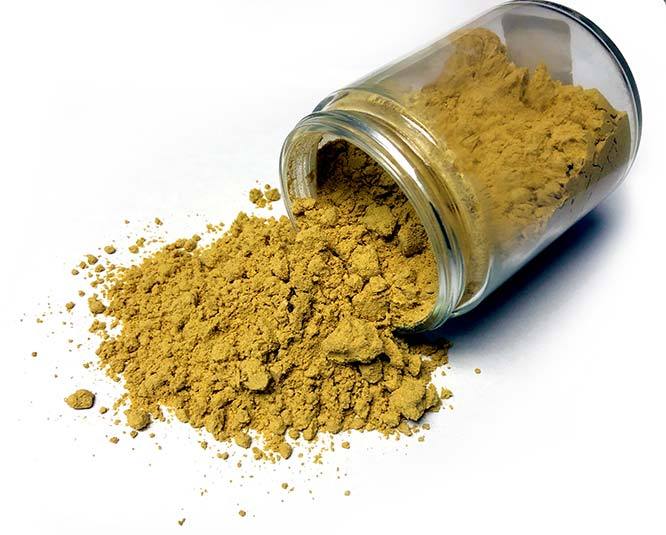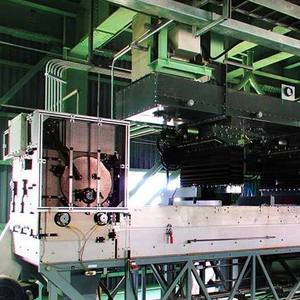Tried and True, But New




PHOTO: ST EQUIPMENT &TECHNOLOGY
July 13, 2020
BY Kyle Flynn
FROM JULY 2020 ISSUE
As margins on ethanol products tighten or disappear, many ethanol producers choose to focus on value creation from coproducts. Dried distillers grains with solubles (DDGS) has long been an undervalued coproduct.
But at 28 to 32 percent protein, it contains too much protein to realize its full value as ruminant feed, while at the same time being too low in protein to be utilized in high substitution ratios for monogastric feeds like aquaculture, swine and poultry. This is a common challenge across the animal feed industry and represents a huge opportunity in the field of precision animal nutrition, defined as providing an animal with feed that precisely meets its nutritional requirements. Other opportunities, such as the rapid growth of aquaculture and the high cost and limited availability of fish meal, reinforce this market trend.
Dry, Wet and Electrostatics
Recently, multiple technologies have entered the market to address the need to generate a high-protein coproduct. Broadly speaking, these technologies can be classified into two segments: those that are integrated with the ethanol production process and operate on wet process streams; and those that occur after the ethanol production process and operate on dry process streams. The wet technologies often utilize a combination of separation methods that rely on particle size modification such as grinding, particle size segregation such as filtration or screening, and density separation such as cyclone separation to separate yeast from plant fiber. These systems may either be before or after the fermentation stage, but in all cases the separation of protein from fiber occurs before the distillers grains is dried. These wet systems are integrated into the ethanol process and therefore operate simultaneously with the ethanol plant.
By contrast, dry processing methods are independent of the ethanol production process, and instead operate on the DDGS stream directly. Such systems often utilize grinding, air classification or dry sieving. One novel approach uses electrostatic separation to generate high-protein DDGS by removing fiber in an entirely water-free, back-end process that is independent of the ethanol production process.
Electrostatics is a phenomenon that nearly everyone has experienced first-hand in daily life, but few have encountered in an industrial setting. Perhaps the most relatable example of electrostatics is the effect of rubbing a balloon on a person’s hair. As the rubber balloon comes in contact with human hair, it removes electrons from the hair. This is because rubber and most polymers have a high electronegativity (affinity for electrons). The balloon is left with a net negative charge, having accumulated the extra electrons, and the subject’s hair has a positive charge. Of course, like electrical charges repel each other, so the subject’s hair stands up on end in an effort to maximize the distance between other positively charged strands of hair.
In the case of DDGS, protein and fiber acquire opposite electrical charge upon contact with each other, allowing them to be separated from each other in a high-strength electric field.
Growing Attention
Electrostatics is not a new phenomenon of course, and has a large number of real-world and industrial applications. Electrostatic separation has been used by selected industries for many years. In minerals processing and recycling applications, electrostatic separation has been in commercial use for at least 50 years. Electrostatic separation of plant-based materials has been investigated for over 140 years, with the first patent for electrostatic separation of wheat flour middlings filed as early as 1880.
Recently, electrostatic processing has received a great deal of attention as a method to concentrate plant proteins. This development has accelerated in the past 10 to 20 years, with many research universities in Europe and the U.S. applying electrostatic separation techniques to a wide variety of materials including DDGS, oilseed meals, and pea and pulse proteins. From this research, it is evident that electrostatic methods have the potential to generate new, higher-value plant protein ingredients and products, and offer an alternative to wet processing methods.
Methods of electrostatic separation offer advantages over wet separation methods, including cost and operational flexibility from the ethanol production process. Electrostatic separation methods also offer the advantage of requiring no chemicals or water, which makes cleaning easier since the rate of bacterial growth is reduced in dry products. And electrostatic separation is mild, in that it does not change the functionality of the native protein.
Advertisement
Advertisement
Ash and Feed
ST Equipment & Technology has been using electrostatic separation in industrial applications since 1995 to process fly ash from coal power plants. Over 20 million tons of product fly ash have been processed by the STET separators installed in the U.S. alone.
Although to some, repurposing a technology to process fly ash (a glassy aluminosilicate mineral left over from burning coal for power) to concentrate plant protein from DDGS may seem strange, in truth, the DDGS market and the fly ash market share a surprising amount of similarities. For starters, both products are generated in large volumes in the U.S., with an estimated 36 million metric tons of distillers grains produced by the U.S. ethanol industry in 2019. By comparison, the U.S. coal-power industry generated around 35 million metric tons of fly ash in 2017. Both products are sold at low margins, and their value is highly dependent on processing and transporting large volumes at low costs.
And both DDGS and fly ash ultimately derive their value from displacing other higher-cost materials. Fly ash substitutes for cement, the most expensive component in ready mix concrete. DDGS competes with other protein sources such as soy, canola and sunflower meal, among others.
And both DDGS and fly ash have had to make the journey from low-value waste stream to value-added coproduct. Fly ash was long considered a waste product to be landfilled, until low-cost technologies enabled it to be recycled as a value-added component in ready mix concrete. DDGS has made a similar evolution, from being considered a low-value feed material nearly given away, to becoming a consistent manufactured feed ingredient that’s globally exported, and increasingly sold under trademarked names with an emphasis on quality and consistency.
Ultimately, it looks likely that the long-term trend of maximizing the value of ethanol coproducts, including distillers grains, will continue. Processing technologies will continue to be critical to maximizing the technical performance of protein coproducts, and ultimately shaping their value creation potential for the ethanol industry.
These technologies will need to demonstrate consistent performance, high reliability, low operating cost and rapid return of capital to end users, at a time when the ethanol industry faces unprecedented challenges and needs new sources of revenue.
Author: Kyle Flynn
Director of Business Development
ST Equipment & Technology
781.972.2324
kflynn@titanamerica.com
Advertisement
Advertisement
Related Stories
U.S. fuel ethanol capacity fell slightly in April, while biodiesel and renewable diesel capacity held steady, according to data released by the U.S. EIA on June 30. Feedstock consumption was down when compared to the previous month.
XCF Global Inc. on July 8 provided a production update on its flagship New Rise Reno facility, underscoring that the plant has successfully produced SAF, renewable diesel, and renewable naphtha during its initial ramp-up.
The U.S. exported 31,160.5 metric tons of biodiesel and biodiesel blends of B30 and greater in May, according to data released by the USDA Foreign Agricultural Service on July 3. Biodiesel imports were 2,226.2 metric tons for the month.
CARB on June 27 announced amendments to the state’s LCFS regulations will take effect beginning on July 1. The amended regulations were approved by the agency in November 2024, but implementation was delayed due to regulatory clarity issues.
Legislation introduced in the California Senate on June 23 aims to cap the price of Low Carbon Fuel Standard credits as part of a larger effort to overhaul the state’s fuel regulations and mitigate rising gas prices.
Upcoming Events









